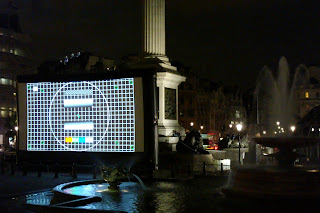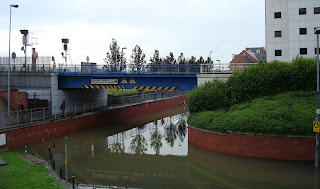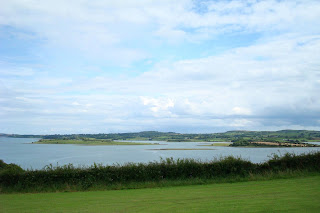The joy of cinema is that you can travel further and cheaper than is easy to do in real life. So, over the last couple of years, I’ve had regular forays into French culture, a couple of Danish angst flicks, a Dutch wartime story, a German spy story, an Irish Traveller story, an Italian anti-hero, a Spanish fairytale, an Australian disaster, a medieval Swedish classic, an Austrian/Bosnian-Herzegovinian/German/Croatian co-production, and very nearly a Polish comedy.

Last night extended this tour to Romania, with the Cannes award winning A fost sau n-a fost? (12:08 East of Bucharest). Interestingly, 4 Lluni, 3 saptamani si 2 zile (4 Months, 3 Weeks and 2 Days) another Romania film picked up prizes at this years Cannes festival, though it won't be released in the UK until 11 January 2008. Update 7 Feb - Now reviewed.
The film takes place over part of a day, three days before Christmas. It’s the 16th anniversary of the revolution. One character commented,
“What’s all the fuss about the revolution? No one cares any more.”
But the head of the local television station, Virgil Jderescu, is marking the event with a retrospective interview with a couple of local guests from the provincial town of Vaslui who remember the events of 22 December 1989. The question is
“Was there or wasn’t there a revolution in our town?”
(The film’s Hungarian title literally translates as “was there or wasn’t there?”)
A matter of whether there was any real pro-democracy revolting before the news came through at 12:08 that Ceausescu had been toppled, or if the residents just came out into the town square to celebrate after Ceausescu’s was overthrown in the capital Bucharest.

Prof Manescu, the local school principle, is joined by an old retired man, Emanoil Piscoci, in the studio. Manescu has a well-known (and long-term) drink problem, and borrows money from both his friends and foes. While he owes half the town their loans back, do they owe him anything? Was he present in the town square that day, standing up to the Securitate before 12:08?
Will the callers into the programme remember his contribution? Or sixteen years on, do they all hold different memories of that day’s events?
“There was no revolution. We were better under Ceausescu.”
It’s basically a televised radio talk show: a bit like plonking Stephen Nolan down behind a table, with a webcam trained on him, and a studio guest either side. And at this point, the film turns into a play, with three talking heads sitting behind a desk.
We watch in real-time, ad breaks and all. Between the show’s wobbly set, wobbly direction, and even more wobbly camera work, it becomes ever more excruciating to watch as the guests credibility is questioned and the show’s narrative disintegrates. Only, when it comes to treatment of the local Chinese businessman, Nolan would never be so rude to a caller. Believe me!

As someone largely ignorant of Romania and its culture, the film portrayed post-revolution life as downbeat. Revolution, but not transformation. The men order their wives around, teenagers’ main pastime is lighting firecrackers in apartment block hallways. It’s a grey-coloured film, in which even the whites are grubby. And in the gloom, much is made of shiny surfaces that reflect, including car windshields and windows.
It’s a slow burning film, that raised very few laughs in the sparsely filled Renoir screen, and for didn’t live up to its comedy billing. Yet reviews suggest that if you know a bit about Hungarian life, you’ll find lots to smirk about. Watch out for the origami!
But if it passes through the QFT, it’s worth a viewing. It’s beautifully and simply shot. And it’ll be one of the few films you see this year that will show some foodstuff companies as sponsors in the opening titles!





+and+followers+(fans).jpg)



































